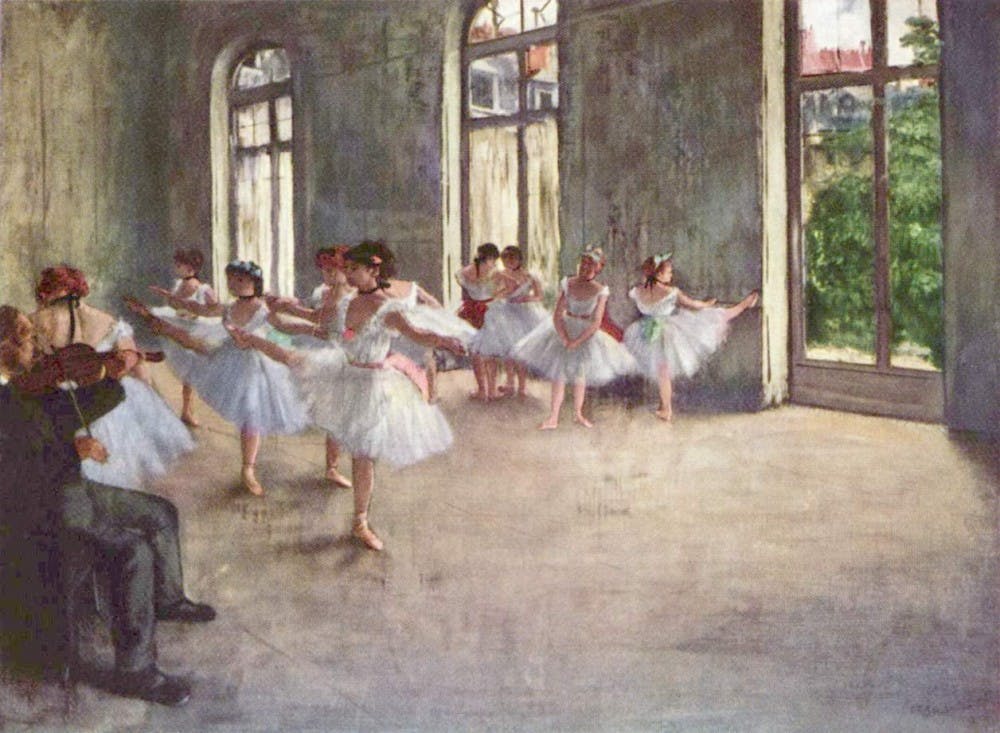Thirty minutes into your free meal at White Dog courtesy of your aunt’s best friend Carol who happens to be in Philly on business, she mentions how much she loves Degas. You nod politely as she laments the fact that so many people don’t know Degas, and those who do usually only know the ballerina paintings. Three minutes later her soliloquy is over. “And you, dear? What do you think of Degas?”
If you are anything like me, you can’t tell a Degas from a Renoir to save your life. Your mother may or may not have donated a lot of supplies to the art room in grammar school to ensure you would pull an A despite your lackluster artistic abilities. You can’t remember anything from said art classes and remain silent whenever it comes up in conversation in a group. But what do you do when you’re talking to the art connoisseur one–on–one? After all, you really need to impress Carol because her sister’s husband is a principal at McKinsey and you need an internship that will make all your friends jealous.
Do: Pick one artist that is your favorite. He or she is your go–to. Know the correct pronunciation of his or her name and three of his or her paintings: your favorite (you should actually have an opinion and some background knowledge on this one) and two others that you have minimal knowledge about (you can at least picture it in your head). If you need some suggestions, try Monet, Picasso, Warhol or Rembrandt.
Don’t: Make your favorite artist an obscure one. It is essential that the person you’re speaking to already knows enough about this artist that they don’t question you in–depth. But don’t pick anything too predictable—choosing The Starry Night as your favorite painting is equivalent to admitting that yes, you did fall asleep in Spanish when Profesora was discussing that lady who did the unibrow self–portrait that you always felt like was giving you the side eye from its place of honor on the wall.
Do: Use vague adjectives to describe any paintings the art connoisseur brings up. “Tortured” is a particularly good one, because even if the painting they mentioned is a happy scene, oftentimes the artist’s life was rather unpleasant. On the off chance that neither of these are relevant, the art connoisseur will definitely look confused and might say something to that effect. Save face by claiming that you meant that you could see how much of himself the artist put into the piece in the brushstrokes. Other great adjectives: thought–provoking, intense, awe–inspiring.
Don’t: Contradict the person. You don’t want to directly disagree with anything they are saying because they will almost certainly want you to rationalize your viewpoint and you don’t know enough about this topic to intelligently debate it.
Do: Allow the art connoisseur to carry the conversation. The less you say and the more appreciative nods and smiles you give, the better off you will be. If you have exhausted all your vague adjectives, try to do this for as long as is possible. Worse comes to worst, discreetly pull up a photo of the painting on your phone under the table and start talking about the color scheme.
Don’t: Let the conversation remain focused on art for a long period of time. Change the subject as soon as you see the opportunity. Speaking of ballerinas, don’t you have a niece? Does she do ballet? How are your sister and her family? Are they still in New York? I’m hoping to be in New York this summer…

